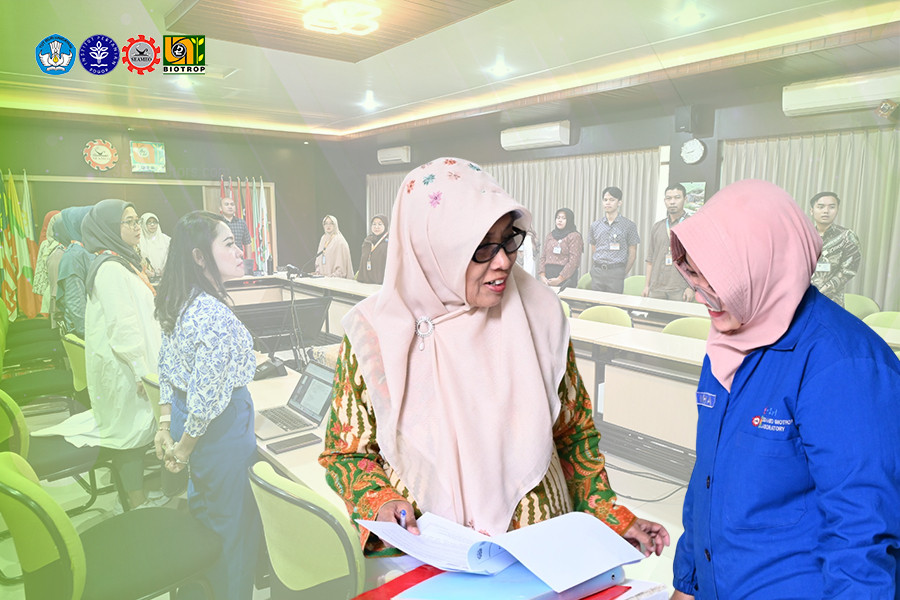The SEAMEO BIOTROP Service Laboratory conducted the 2nd surveillance assessment activity directed by the National Accreditation Committee (KAN) on 19-20 February 2024. This surveillance is part of the evaluation and review process carried out to ensure that the laboratory still meets the competency requirements in accordance with international SNI standards ISO/IEC 17025:2017, including regarding the competence of testing and calibration laboratories.
The activity was held from 19 to 20 February 2024 at SEAMEO BIOTROP Jati Room, which was attended by 25 participants consisting of top management of laboratory services, analysts, document controllers, SEAMEO BIOTROP management, and MSIB Batch 6 Management and Sub-Optimal Land Utilization (LSO) students. The event was opened by the Science and Innovation and Technology Department Manager of SEAMEO BIOTROP, Mr Selamet Widodo, M.Sc., followed by KAN assessor, Dra. Salmeiningsih. Dra. Salmeiningsih. In her opening remarks she stated the importance of this surveillance in collecting important data for evaluation, including the potential for phosphorus and potassium that the soil can absorb. Furthermore she added that the purpose of this surveillance is to ensure that the standards and requirements that have been set are completed by carrying out "Witness Surveillance" or direct observation of the testing process carried out by the laboratory.
Supervision in the context of a quality management system refers to monitoring and evaluation activities carried out to ensure that SEAMEO BIOTROP still complies with established quality standards. Several benefits of monitoring in a quality management system help organizations in unifying the performance of processes and activities related to the quality management system. Surveillance helps assess the extent to which an organization achieves its goals and meets established quality standards. In addition, by carrying out regular monitoring, organizations can identify non-conformities or deviations from established procedures or standards.
At the closing of Surveillance 2, Quality Manager Risa Rosita, M.Si., and Laboratory Services Coordinator Mutiara Hidayat, S.Si., stated that surveillance results can provide valuable insights to improve the efficiency and effectiveness of processes in the organization. Identification of areas requiring improvement can help in optimizing operations. Surveillance results can be used to plan changes and corrective actions. Thus, monitoring in a quality management system helps organizations to ensure that their operations comply with established quality standards and continuously improve their performance over time.
 Wednesday, 21 February 2024 on 12:00pm
Wednesday, 21 February 2024 on 12:00pm
